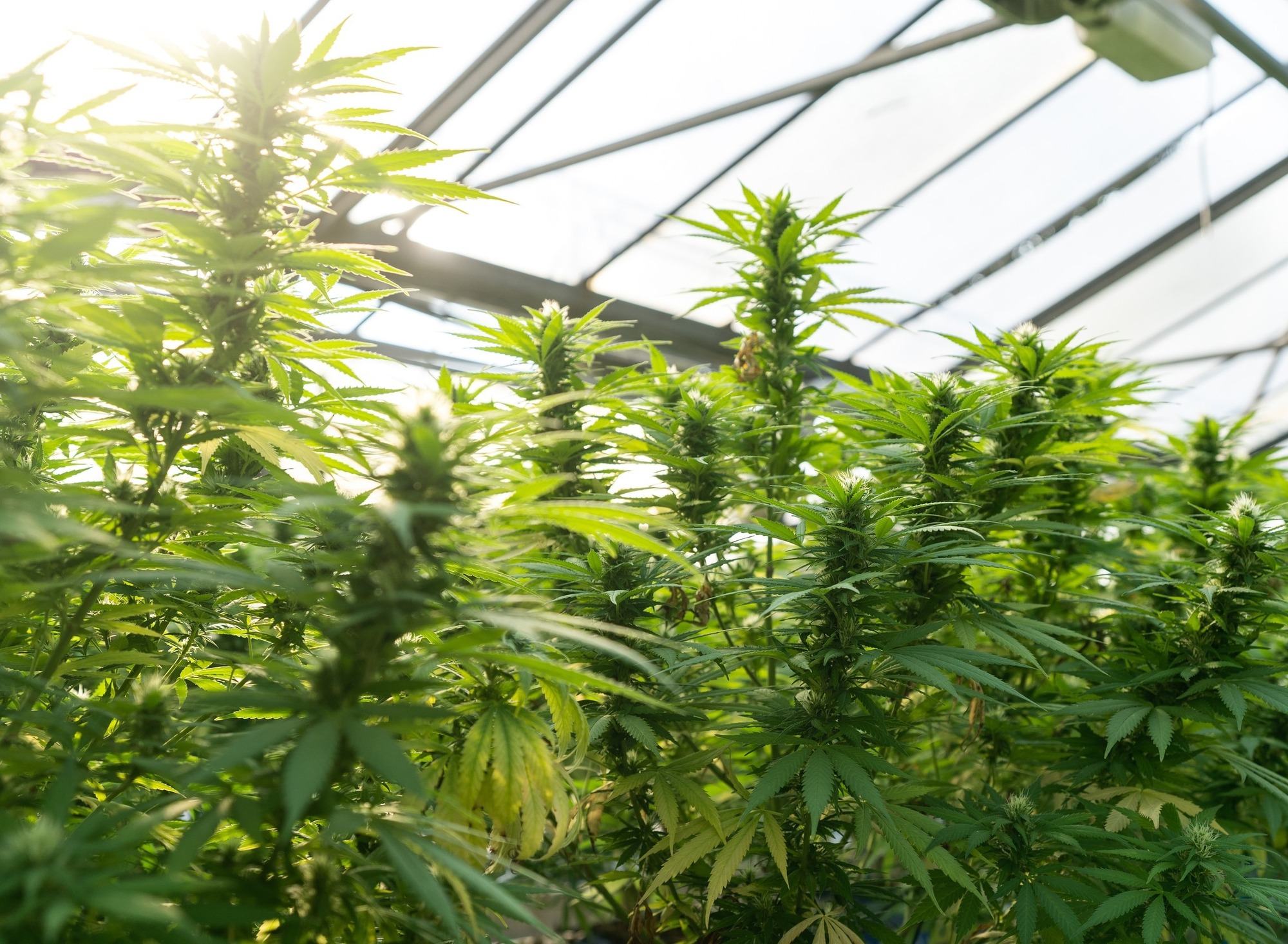
There are a lot of myths about the cannabis industry and the plant it is built around. Some of the misconceptions are due to years of smear campaigns, and some of it is from a lack of information about this unique plant. However, as legalization becomes more widespread, the more we understand about cannabis. As we do this, the myths that have lived for years are now being shattered.

“Growing cannabis is easy, just water it and watch it grow!”
If growing cannabis was easy, then everyone would be doing it. Cannabis cultivation is a skill that requires constant learning and years of practice. While cannabis is commonly thought of as a weed, growing quality cannabis for human consumption takes a skilled hand, knowledge, and patience.
Cannabis cultivation actually encompasses a wide range of growing techniques that could take a lifetime to master. Advancements in technology are creating new ways of growing cannabis, creating a need to consistently be learning. To say that growing cannabis is easy is a drastic misconception.
“All cannabis workers do is sit around and get high all day.”

This is one of the most harmful stereotypes to cannabis workers that is thankfully falling by the wayside. According to Alpharoot, “The cannabis industry is expected to create over 428,000 jobs in the US in 2023.”
As cannabis legalization expands, the industry will create more jobs. Depending on the niche, some jobs are highly specialized. These types of jobs can include pathogen testing, compliance management, and cultivation. Even trimming is a skill that takes time to master efficiency and quality.
If all cannabis workers did was sit around and get high all day, then there would be no cannabis. At the very least, there would be no quality cannabis. Thankfully, this harmful myth is rapidly falling by the wayside.
“Viruses that affect traditional crops cannot affect cannabis.”
Similar to both humans and dogs getting head colds, cannabis plants can contract viruses and viroids that impact traditional crops. In fact, many of the viruses and viroids that impact traditional crops like tomatoes, corn, and hops, can impact cannabis plants. It is only thanks to knowledge about how they impact traditional crops that we have been able to address their impact on cannabis so quickly.
For Example, Hop Latent Viroid has traditionally impacted hops. Various studies have observed the damage it has on the traditional crop and how it spreads. However, Hop Latent Viroid has become a serious problem within the cannabis industry as well. This crop-damaging viroid has spread through cannabis grows across the nation, creating new hurdles.
“Cannabis has no medical benefit.”

This is a myth that is easily disproved by the ongoing research conducted all over the country. Modern research has been observing the use of cannabinoids for different purposes. For example, according to information published by the Asia-Pacific Journal of Oncology Nursing, cannabinoids were found to have potential in the treatment of cancer anorexia and cachexia.
While much of the current research is still deemed preliminary, it has opened up new pathways towards potential medical alternatives. At the time of this writing, research is still ongoing to discover just exactly how much this plant can be used for the benefit of humanity.
“You can overdose on cannabis.”
While it is true that one can consume more cannabis than one should, overdose does not accurately describe the experience. What many describe as an overdose is actually a set of temporary symptoms including dizziness, nausea, and anxiety. This is caused by ingesting a higher amount of THC than an individual’s body is accustomed to.
The good news is these symptoms are very temporary. Typically, they will subside after about 30-45 minutes. It is important to remind yourself that these sensations are temporary and not to panic. After the symptoms subside it is important to rest and drink water.
However, allergies to cannabis are a very real and concerning thing. Symptoms of a cannabis allergy can include congestion, hives, a swollen tongue, low blood pressure, and difficulty breathing. If you believe you are having an allergic reaction, please seek medical attention immediately.
“Once you use cannabis, you will move on to harder substances.”
This is another harmful myth propagated by anti-cannabis propaganda. It is due to this particular myth that we hear the term “gateway drug” associated with cannabis. However, it could not be further from the truth.
In some instances, cannabis has been used in opioid addiction recovery plans. According to Psychology Today, “Cannabis can help with symptoms such as anxiety, insomnia, restlessness, sadness, muscle aching, abdominal cramping, as well as nausea and vomiting.”
Additionally, the CDC states, “Most people who use marijuana do not go on to use other, “harder” drugs. People who use marijuana and do go on to use other drugs (including alcohol and tobacco) may have a higher risk of dependence or addiction to those drugs, especially if they started using marijuana at an early age and use it frequently.”
“All cannabis is the same.”

While this is less of a myth and more of a generalized misconception, it is still worth discussing and dispelling. Cannabis is not the same across all plants as tomatoes are. To make a comparison, think about the multitudes of different types of tomatoes. Romas, cherry, beef steak…there seems to be an endless list. The same can be said of cannabis.
Over hundreds of years, selective breeding has created individual strains and even a distinct separation between hemp and marijuana. This form of selective breeding focuses on cannabinoid and terpene content to achieve certain properties, scents, colors, and tastes.
Selective breeding also has created a line between strains grown for fiber and strains grown for consumption, especially in the hemp industry. This has allowed growers to optimize crop production and create new niches in the industry. For example, hemp grown for fiber can be used to make plastic alternatives and housing material.
The most surefire way to bust the myths surrounding cannabis and the industry dedicated to it is by continuing to learn about the plant and promoting scientific evidence. One of the easiest ways to do this is by reading articles and studies about the cannabis plant and the projects being conducted to determine how it can be used.
Not sure where to start? Verne Bio’s Knowledge Center has a wide range of topics covering the cannabis plant from how the plant functions, to cultivation tips and tricks, to ongoing research. We are dedicated to helping provide anyone who wants to learn about cannabis the tools they need to do so.
When looking through the Knowledge Center, readers can expect to find topics such as;
Want us to bring content like this to you? Sign up for our newsletter (located directly on our homepage), and have Verne Bio content delivered right to your inbox! We cannot wait to help expand your knowledge of the wonderful plant that is cannabis.
Works Cited
Alpharoot. “Cannabis Statistics 2023.” AlphaRoot, 19 May 2023, https://alpharoot.com/cannabis-statistics-2023/. Accessed 3 September 2023.
Centers for Disease Control and Prevention. “Risk of Using Other Drugs | Health Effects | Marijuana.” CDC, 2020, https://www.cdc.gov/marijuana/health-effects/risk-of-other-drugs.html. Accessed 10 September 2023.
Grinspoon, Peter. “Can Cannabis Help Alleviate the Opioid Crisis?” Psychology Today, 5 June 2023, https://www.psychologytoday.com/us/blog/seeing-through-the-smoke/202304/can-cannabis-help-alleviate-the-opioid-crisis. Accessed 10 September 2023.
Seymour-Jackson, Emily, et al. “Cannabinoids in the treatment of cancer anorexia and cachexia: Where have we been, where are we going?” Cannabinoids in the treatment of cancer anorexia and cachexia: Where have we been, where are we going?, Asia-Pacific Journal of Oncology Nursing, 2023, https://www.sciencedirect.com/science/article/pii/S2347562523001105. Accessed 10 9 23.
Westphalen, Dena. “Allergic to marijuana: Symptoms, causes, and diagnosis.” Medical News Today, 2023, https://www.medicalnewstoday.com/articles/321343#symptoms. Accessed 10 September 2023.

to receive updates and news on our products, events and promos!